1. Free-Space Management
-
fragmentation, splitting, coalescing
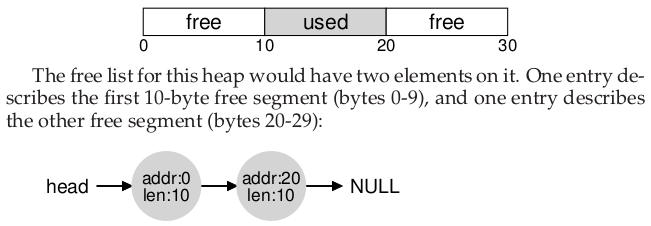
After
malloc(1):
vs. after
free(10):
After merge:

2. Implementation
-
ptr = malloc(20);
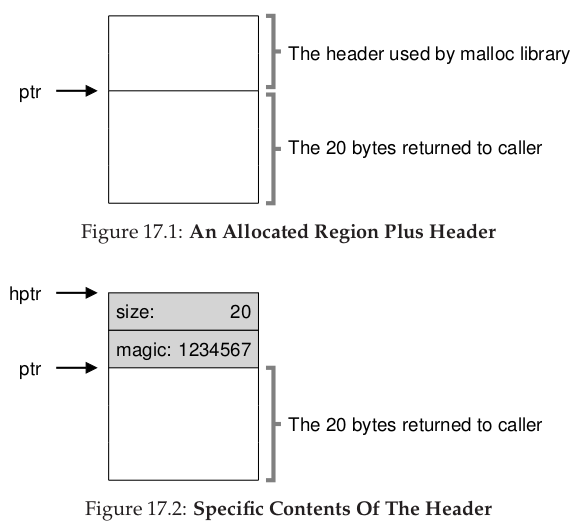
typedef struct { int size; int magic; } header_t; void free(void *ptr) { header_t *hptr = (header_t *) ptr - 1; ... }
3. Heap with One Allocation
-
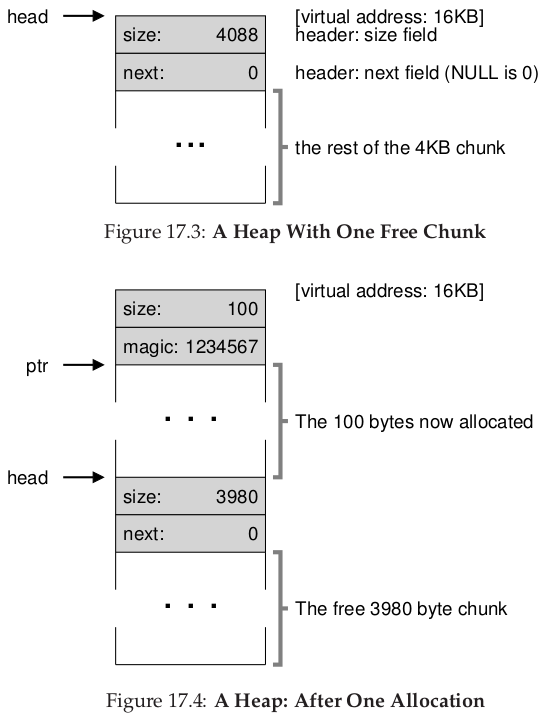
4096 - 108 - 8 = 3980
4. Heap with Three Allocations
-
16 KB = 16384; sptr = 16384 + 108 + 8 = 16500; head = sptr + 100 + 108 = 16708
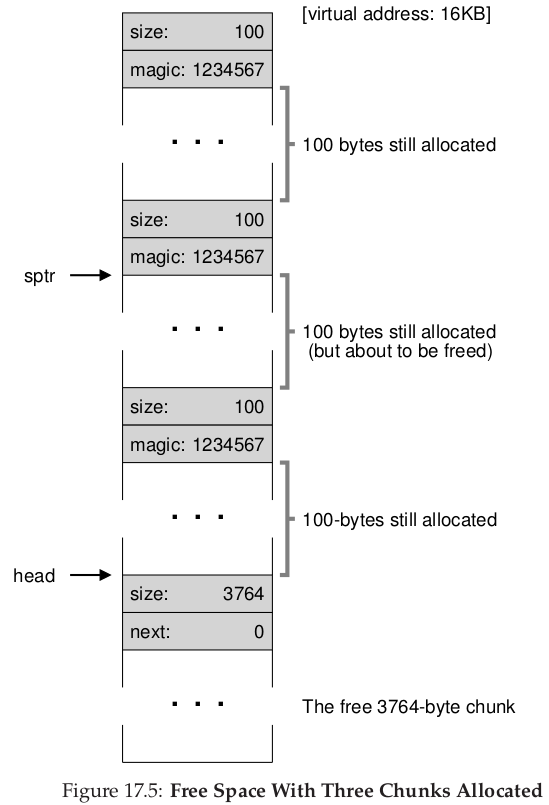
4096 - 3*108 - 8 = 3764
5. Heap with Two Allocations
-
after free(sptr): head = sptr - 8 = 16492;
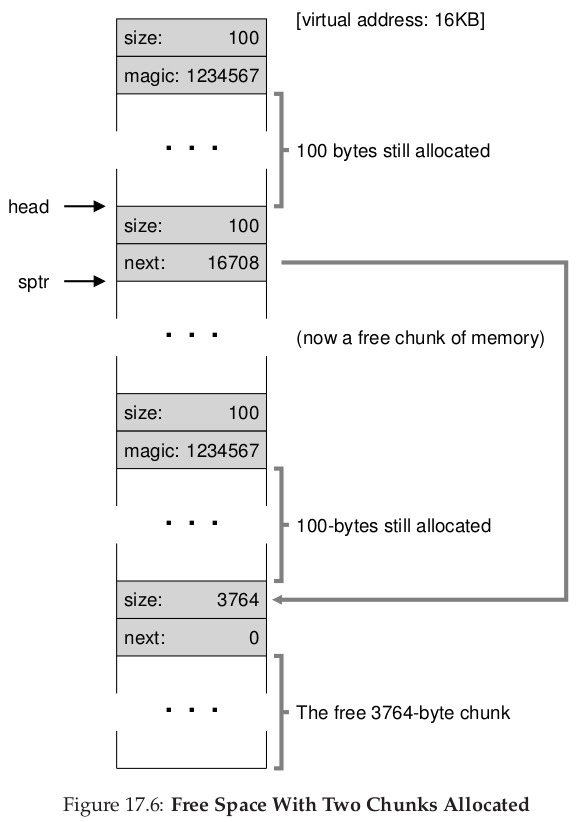
6. A Non-Coalesced Free List
-
after last two in-use chunks freed, without coalescing:
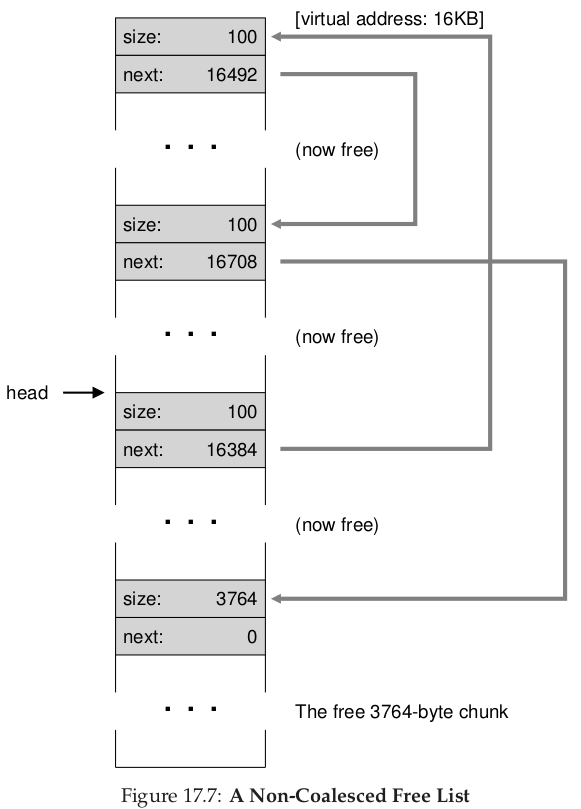
7. Policies
-
goals: minimize fragmentation, minimize search time
ordering: address-based vs. increasing size vs. decreasing size
Best Fit, Worst Fit, First Fit, Next Fit
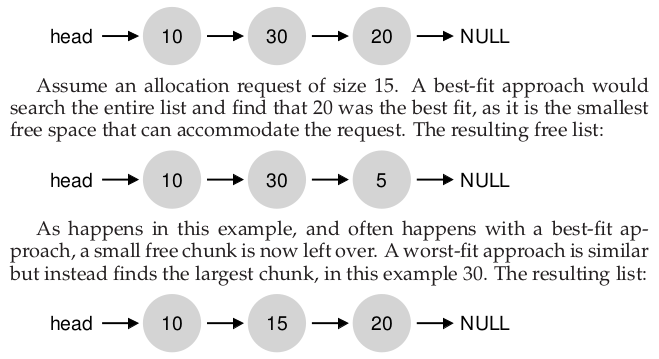

Other: tree vs. list, separate lists for different sizes, custom block allocation, ...
8. Custom Block Allocation
-
An application with heavy use of malloc() and free() for a particular data structure
may obtain a significant performance increase using block allocation and caching.
For example, data nodes could be allocated in blocks of 1000, so then to allocate 1,000,000 nodes malloc() would be called only 1000 times.
And instead of using free(), unneeded nodes could be saved for later reuse.
Example implementation:
void *emalloc( size_t nbytes) { // malloc() with exit on error void *p = malloc(nbytes); if(!p) { fprintf( stderr, "malloc() failed\n"); exit(1); } return p; } typedef struct node { double x; int y; /* ... data ... */ struct node *next; } Node; #if BLOCK static Node *head = 0; static int block = 1000; // number of nodes to allocate at one time Node *new_node( void) { if( !head) { // allocate a block of nodes head = emalloc(block*sizeof(Node)); Node *last = head+block-1; for( Node *p = head; p < last; ++p) p->next = p+1; // link the nodes last->next = 0; } Node *n = head; head = head->next; return n; // return head of list } void free_node( Node *n) { n->next = head; head = n; // insert at head of list } #else #define new_node() emalloc(sizeof(Node)) #define free_node(n) free(n) #endif
9. Exercises
-
Exercises from the book using malloc.py:
1. First run with the flags -n 10 -H 0 -p BEST -s 0 to generate a few random allocations and frees. Can you predict what alloc()/free() will return? Can you guess the state of the free list after each request? What do you notice about the free list over time?
2. How are the results different when using a WORST fit policy to search the free list (-p WORST)? What changes?
3. What about when using FIRST fit (-p FIRST)? What speeds up when you use first fit?